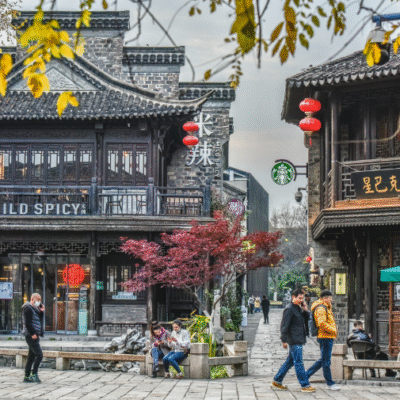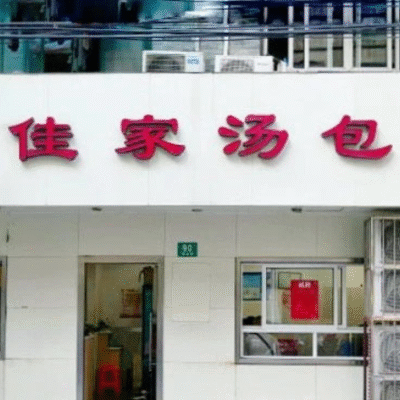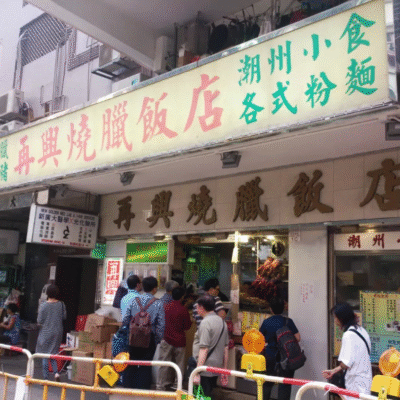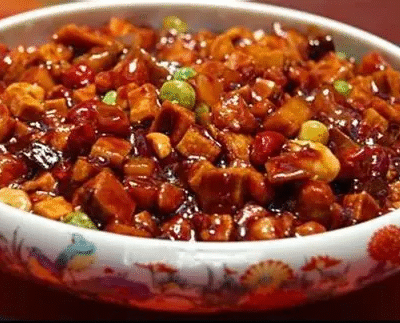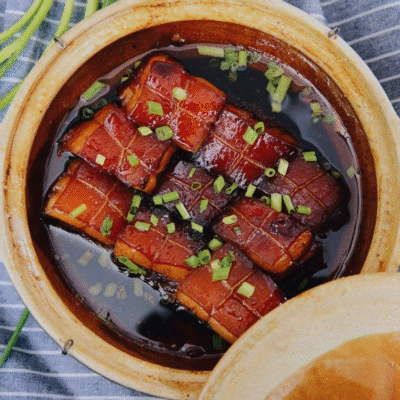This article is translated from “The Story of Tofu” (authorized by the original author).
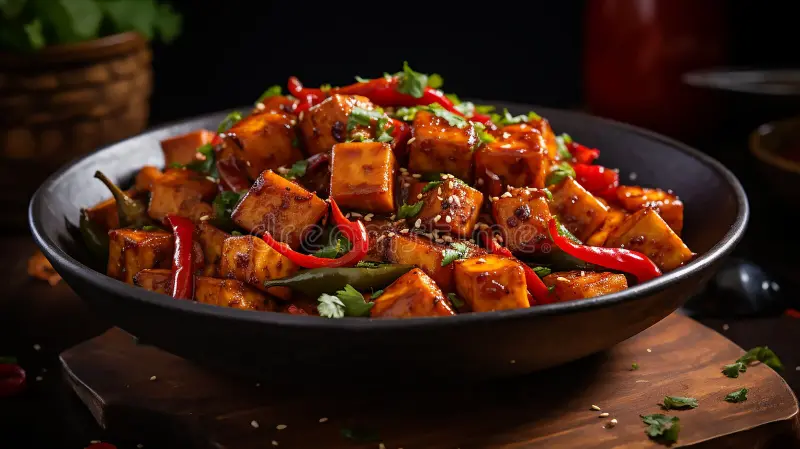
When I was a child, due to my physical constitution, I couldn’t eat much meat. Understanding this, my aunt—who worked as a cook in the countryside—would always find creative ways to prepare nutritious meals for me.
Among all the dishes she made, the one that remains most vivid in my memory is her mapo tofu.
Unlike the oily and overly spicy versions often served at city Chinese restaurants, hers was much gentler and healthier—a comforting, home-style mapo tofu filled with warmth and care.
Since coming to Japan, I’ve found myself missing that taste of home more and more.
Today, I’d like to share with you a special recipe for mapo tofu—one that balances both nutrition and the authentic flavors of Sichuan, while also carrying a piece of my childhood memories.
I hope that, through this dish, you’ll be able to feel even just a little bit of the warmth it brings.
Ingredients for Sichuan-Style Mapo Tofu
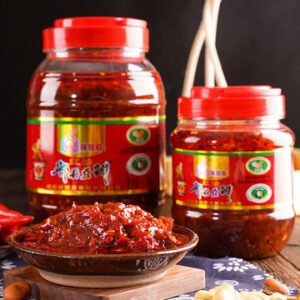
The biggest difference between mapo tofu made in Japan and the authentic Sichuan version lies in the use of doubanjiang (fermented chili bean paste) and hot pot base (huoguo dǐliào).
In Japan, most commercially available doubanjiang differs in ingredients and fermentation depth from the Pixian doubanjiang (郫县豆瓣酱) used in Sichuan, resulting in noticeable differences in flavor and spiciness.
Moreover, in Sichuan, it’s common to sauté the hot pot base with beef tallow, which brings out its full aroma. This step is essential for creating the deep richness and signature málà (numbing and spicy) flavor that defines authentic Sichuan cuisine.
| Ingredient | Amount | Nutritional Highlights |
|---|---|---|
| Silken tofu | 1 block (approx. 300g) | Rich in plant-based protein, low in fat and calories |
| Lean ground beef | 100g | High in protein and iron; helps boost physical strength |
| Pixian Doubanjiang (fermented chili paste) | 1.5 tablespoons | Key flavor base; high in sodium, so use with care |
| Hot pot base (clear oil type) | 1 teaspoon (approx. 10g) | Enhances aroma and umami; clear oil version is a healthier option |
| Ginger & garlic (minced) | 1 teaspoon each | Aid digestion and add aromatic depth |
| Green onion (chopped) | As needed | Adds color and a fresh finish |
| Sichuan pepper (powdered or whole) | 1 teaspoon | Adds numbing flavor (málà); may promote blood circulation |
| Chili powder or chili oil | To taste | Adjustable spiciness and smokiness |
| Light soy sauce & dark soy sauce | 1 teaspoon each | Balances flavor and color |
| Cornstarch slurry | 2 teaspoons (mixed with water) | Thickens the sauce and helps it coat ingredients better |
| Vegetable oil (rapeseed or olive oil) | 1.5 tablespoons | Opt for heart-friendly fats for a healthier dish |
Four Key Points of Sichuan Mapo Tofu
Parboil the tofu to remove any unpleasant odor and improve its texture.
Cut the tofu into approximately 2 cm cubes and parboil it in lukewarm water lightly salted for about 2 minutes. This preliminary step helps to reduce the tofu’s characteristic grassy odor and promotes better harmony among the ingredients. Additionally, tightening the tofu’s surface prevents it from breaking apart during cooking, resulting in a more visually appealing dish.
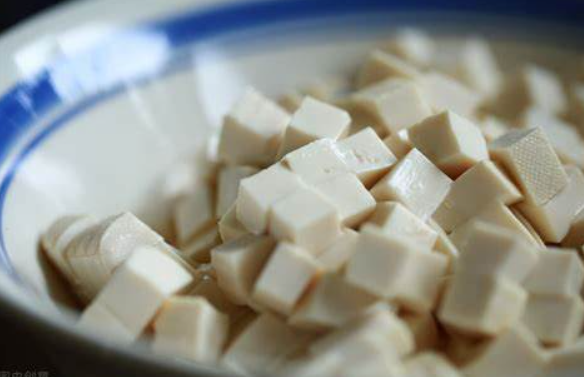
Especially in strongly flavored dishes like mapo tofu, if the tofu retains excess water, the sauce’s taste can become diluted. Therefore, parboiling is an important step that helps the flavors penetrate the tofu better and enhances the overall harmony of the dish.
In Sichuan, this kind of preparation is common even in home kitchens, where the belief that “the more effort you put in, the more delicious the dish becomes” is deeply rooted. Although it’s just a small extra step, incorporating this process greatly improves the overall quality of the finished dish.
Bring out the aroma fully by sautéing doubanjiang and hot pot base.
Adding a small amount of hot pot base at the beginning of the stir-frying process creates a deep, rich aroma and flavor. Using the clear oil (qingyou) type results in a fragrant yet healthier dish.

Doubanjiang is a fermented bean paste characterized by its rich umami from the beans and spiciness from chili peppers, making it an indispensable seasoning in Sichuan cuisine. Adding hot pot base to it layers in complex aromas from various spices and traditional Chinese medicinal ingredients, resulting in a more nuanced and multidimensional flavor.
In authentic Sichuan cooking, layering aromas is considered the essence of the cuisine. It’s not just about spiciness—the balance of fragrance, numbing sensation, and umami is crucial. Because of this, the way doubanjiang and hot pot base are used can elevate homemade mapo tofu to have the same depth and complexity as that served in specialty restaurants.
Additionally, commercially available hot pot bases come in two types: beef tallow-based and clear oil-based. For home cooking with health in mind, the clear oil type, which is vegetable oil-based, is recommended. It effectively brings out the aroma without making the dish overly greasy.
Why is ground beef recommended for mapo tofu?
Traditional recipes often use fatty ground pork, but by switching to lean ground beef, you can get a good amount of protein while keeping the calories lower.
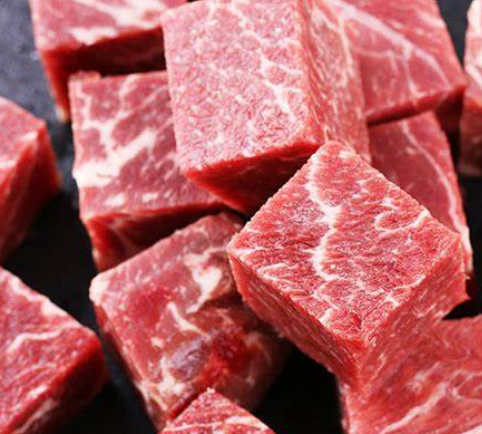
Furthermore, lean meat releases less excess fat, resulting in a less greasy dish that highlights the natural flavors of the tofu and sauce. This variation is especially recommended for those who want to reduce greasiness, health-conscious individuals, as well as households with young children or elderly family members.
Additionally, the unique umami of beef adds depth and richness to the mapo tofu, giving it a flavorful yet clean and light aftertaste. By simply choosing high-quality ground meat, an everyday dish can be elevated to a whole new level of taste.
Enhance the natural umami of the ingredients by avoiding chemical seasonings.
By not using artificial flavor enhancers such as MSG (like Ajinomoto) and instead relying on the natural flavors of garlic, ginger, doubanjiang, and hot pot base, the dish becomes gentler on the stomach and a safer, more wholesome choice to enjoy.
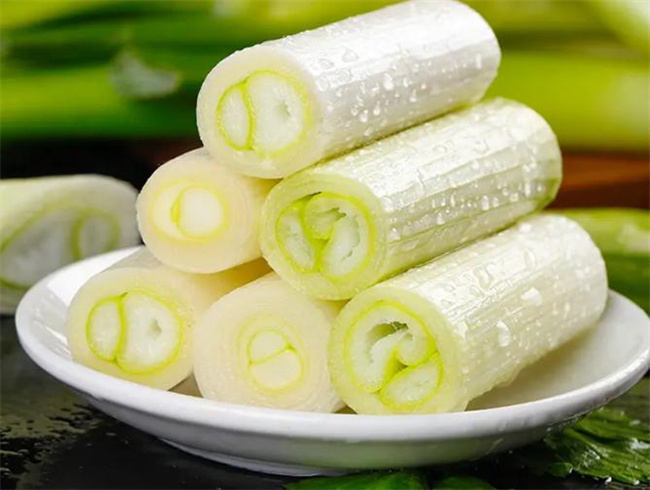
To bring out the natural umami and aroma of the ingredients, it’s important not to rely too heavily on seasonings but to make full use of aromatic vegetables and fermented condiments. Especially in spicy dishes like mapo tofu, having a rich and layered flavor base helps keep the dish enjoyable and satisfying until the very last bite.
Moreover, by avoiding chemical seasonings, the aftertaste becomes cleaner, preventing any unnatural flavors or heaviness from lingering in the mouth. This extra step is especially meaningful when aiming to create gentle, wholesome home-cooked meals that can be enjoyed every day.
Cooking is the harmony created by the ingredients themselves and careful craftsmanship. Though it requires effort, that very care brings forth a gentle deliciousness that slowly seeps into the heart and body of those who eat it.
Mapo Tofu Recipe Flowchart (Mild Spice Version)
For those who are sensitive to spicy food, this version is made a bit milder. Instead of using hot pot base, it uses only doubanjiang.
Actually, this doubanjiang isn’t as spicy as it looks. However, because it turns the soup bright red, it might give the impression of being very spicy. But it’s much milder than it appears, so please feel confident to try making it!



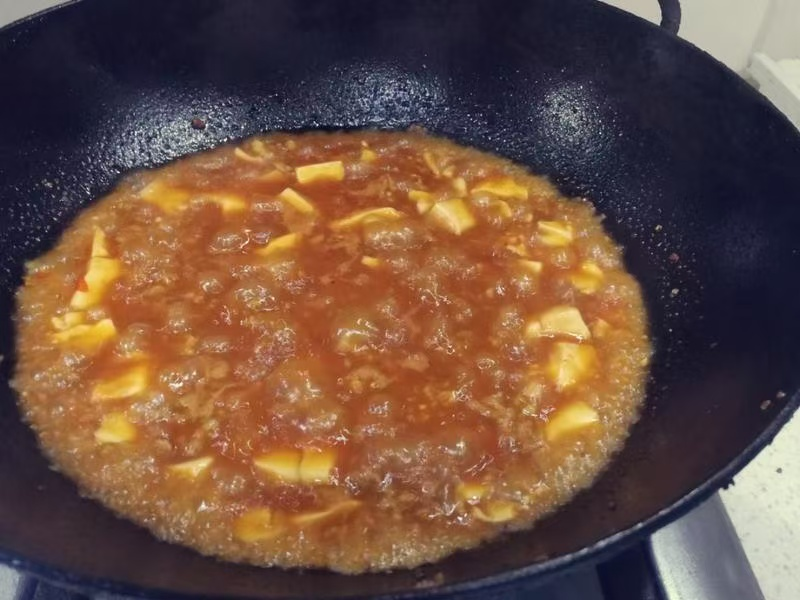
Mapo Tofu Cooking Video
If you’ve studied the recipe for mapo tofu through text, the next step is to watch a cooking video to see the actual preparation process in action.
The video clearly demonstrates practical tips that are hard to convey through text alone—from preparing the ingredients to key techniques for stir-frying.
Please watch it to help you recreate authentic Sichuan-style mapo tofu deliciously in your own home!
Before watching the video, please select Japanese subtitles from the settings button at the bottom right of the screen for the best viewing experience.
FAQ
Q1: What are the basic ingredients of mapo tofu?
A1: The basic ingredients of mapo tofu include tofu, ground beef (or ground pork), doubanjiang (fermented chili bean paste), Sichuan pepper (powder or oil), garlic, ginger, soy sauce, cooking sake, green onions, and cornstarch slurry. You can also add chili peppers or Chinese broth according to your preference.
Q2: Why is it necessary to drain (or parboil) the tofu?
A2: Tofu contains a lot of moisture, so if cooked as is, it can easily break apart and the flavors may become diluted. By draining or parboiling the tofu beforehand, you help it maintain its shape while allowing the seasonings to absorb better.
Q3: Should tofu be parboiled (blanched)? How long should it be boiled?
A3: Lightly parboiling the tofu for about 1 to 2 minutes helps reduce its characteristic odor and makes it less likely to crumble. Boiling it in water with a small amount of salt added enhances this effect.
Q4: Which type of tofu is better suited for mapo tofu, silken tofu or firm (cotton) tofu?
A4: Both types can be used, but for beginners or those who prefer a firmer texture, firm (cotton) tofu is recommended. Silken tofu has a smooth texture but is more delicate and prone to breaking during cooking, so it requires careful handling.
Q5: Which is spicier, doubanjiang or tianmianjiang?
A5: Generally, doubanjiang is spicier. It is made by fermenting chili peppers, giving it a sharp heat and distinctive depth of flavor. On the other hand, tianmianjiang is a sweet fermented soybean paste, mostly used in sweeter stir-fries or dishes like twice-cooked pork, and has little to no spiciness. Using them appropriately depending on the dish adds greater depth to the flavor.

